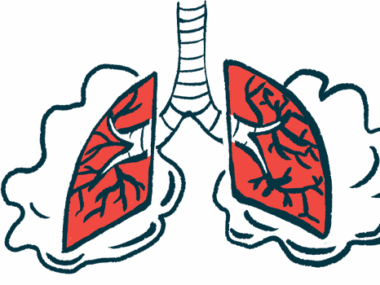3D Model of Blood Vessel Growth May Advance Scleroderma Research
Insight into vessel changes with SSc could support work into potential therapies
Written by |

Researchers have developed a 3D blood vessel-on-a-chip model to investigate problems with blood vessel growth in systemic sclerosis (SSc), a study reported.
Immune-mediated changes to blood vessels is an early and central event in SSc development and usually occurs before the onset of fibrosis — the buildup of scar tissue on the skin and internal organs that marks the condition.
This new test system may facilitate assessments of investigational therapies to prevent abnormal blood vessel growth and slow or halt SSc progression, the researchers suggested.
Details of the 3D model are in the study “High-throughput 3D microvessel-on-a-chip model to study defective angiogenesis in systemic sclerosis,” published in the journal Nature Scientific Reports.
Impaired angiogenesis, or the growth of new blood vessels, is thought to contribute to the onset of blood vessel alterations that leads to fibrosis. Research that helps in understanding angiogenesis in SSc, also known as scleroderma, could support the development of treatments.
However, most SSc-related angiogenesis research relies on animal models, which can take time and be costly, the study noted. Alternate approaches using cells (in vitro studies) do not adequately mimic the natural angiogenesis process that occurs in three-dimensional space.
3D model to aid research into blood vessel growth with scleroderma
Recently, 3D angiogenesis methods have been developed to grow fully formed small blood vessels that maintain many features seen in living tissue. Such features include the growth of new blood vessel tips and stalks, and the formation and widening of the lumen, the hollow tube through which blood flows.
Researchers in the Netherlands now created a 3D angiogenesis model using human microvascular endothelial cells (HMVECs). These specialized cells line tiny blood vessels and have been shown to participate in scleroderma-related processes.
The model uses small plates that house 40 tiny compartments, or chips, such that multiple experiments per plate can be conducted simultaneously, a process called high-throughput.
HMVECs first were cultured in the channel of each chip to form 3D tubules that mimic primary blood vessels. Experiments confirmed the presence of protein markers seen in tightly packed endothelial cells that line healthy microvessels, but no markers related to SSc processes.
Newly created microvessels were then exposed to a cocktail of proteins known to stimulate angiogenesis, leading to the growth of new blood vessel sprouts, with tip and stalk cells, that branch and grow away from the primary vessel. Staining next allowed the observation and measurement of the angiogenic sprouts over time.
Withdrawal of the angiogenic cocktail did not cause sprout growth regression over 48 hours (two days), confirming a time window to expose the system to investigational compounds or blood samples without cocktail interference, the researchers noted.
They then exposed the established sprouts to two signaling proteins, called cytokines, implicated in scleroderma’s development — pro-inflammatory TNF-alpha and pro-fibrotic TGF-beta.
TNF-alpha exposure significantly reduced sprout area by 47% and TGF-beta exposure by 42%. Sprout area regressed by 60% with a combination of these cytokines, “indicating the degradation of the angiogenic sprouts after additions of these triggers,” the researchers wrote.
Incubating HMVECs with molecules that block the action of either TNF-alpha or TGF-beta did not protect microvessels after trigger exposure. However, adding these blockers before cytokine exposure preserved the sprouting area relative to control samples without cytokines.
These findings demonstrated that “the developed assay [test] has an adequate window for exposure, which can be utilized for the routine assessment of compounds and patient samples on angiogenic sprout formation,” the team concluded.
As a proof of concept, fully formed sprouts were then exposed to blood samples collected from eight women with SSc, with a mean disease duration of 5.9 years. After 48 hours, no reduction in sprout area could be seen compared to controls.
Notably, adding SSc blood samples before sprout formation led to sprout networks that were 31% less dense and cultures that were 29% less stable than controls.
Researchers noted that these patients were undergoing treatments, which may lessen their blood’s impact on vessel growth in this test. As such, blood samples from treatment-naive scleroderma patients may provide more detail regarding sprout formation and stability.
“Our in vitro assay allowed us to study and monitor all the stages of angiogenesis, from sprout formation to sprout stabilization and degradation in the presence of different triggers and compounds,” the researchers concluded. “We foresee further uptake of the assay in development of novel treatments against scleroderma.”






